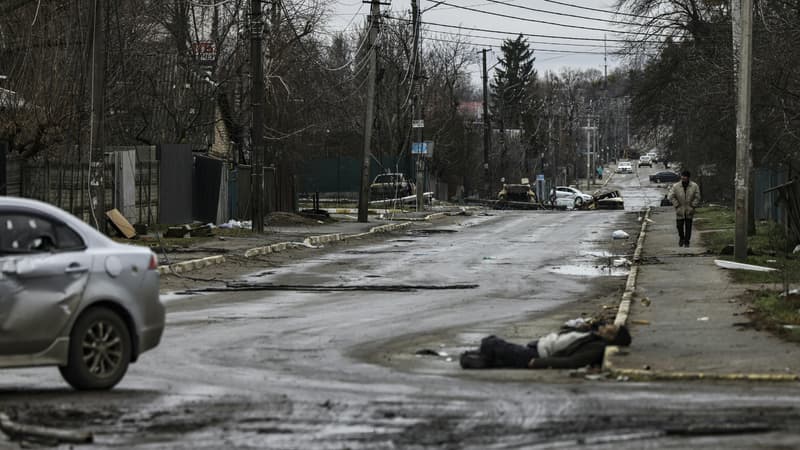Last April, the world discovered Boutcha, and with it, the massacre of which its inhabitants were victims. When this city was liberated from the Russians between February 27 and March 31, the images of the bodies of civilians scattered through the streets went around the world.
Butcha becomes a symbol of the Russian invasion of Ukraine, outraged world opinion. However, for its part, Moscow has the opposite reaction: it denies it. He even accuses Kyiv of “montage”.
During the occupation, several Russian units were present in Boutcha. If Russian paratroopers from the 234th Air Assault Regiment had already been identified as Boutcha’s main executioners, an eight-month investigation by the New York Times provides compelling additional evidence.
“Death Road”
As eyes moved away from Boutcha to other martyred cities and other fronts, journalists from the New York Times they remained, interviewing residents, collecting CCTV footage and recovering various documents.
As more than 400 people were killed in the city, journalists focused on the Yablunska Street victims, of whom 36 were identified. This quiet suburban street has become what the locals now call “death road.”
The investigation cites, for example, the case of Tamila Mishchenko, 52, and her daughter Anna, 14, murdered on March 5. They were part of a group of women fleeing the city when Russian soldiers fired on their vehicle.
“The soldiers interrogated and executed unarmed men of fighting age, killing anyone who got in their way, whether they were children fleeing with their families, residents hoping to find a grocery store, or people simply trying to get home. by bicycle”, sums up the New York Times.
A systematic “cleaning” operation
“These killings were part of a deliberate and systematic action to ruthlessly secure a route to Kyiv,” the investigation concludes. Located some thirty kilometers northwest of the capital, Boutcha was the victim of a systematic “cleansing” operation.
Almost all of the victims identified on Yablunska Street were Ukrainian civilians or prisoners of war. Men suspected of having links to the Ukrainian army were also arrested and executed. The main cause of death was gunshot wounds.
According to New York Timesthe systematic nature of these murders could constitute, beyond a war crime, a crime against humanity.
Phone conversations, teams…
The involvement of the Russian paratroopers of the 234th regiment has been demonstrated through the analysis -in video and in physics- of military material, uniform insignia, radio conversations or ammunition box delivery notes. These types of units are considered one of the best trained and equipped in the Russian Army.
Another piece of evidence: These Russian soldiers regularly used the victims’ phones to call home in Russia, often just a few hours after their deaths. Changes retrieved by the New York Times, who was also able to speak to some of the soldiers themselves. Two confirmed that they were part of “234” and had served in Boutcha.
The journalists also identified Lieutenant Colonel Artyom Gorodilov as the supervisor of this unit’s operations in Boutcha. Shortly after the withdrawal of Russian troops from the region, he was promoted to colonel in April. The ceremony took place a few days after the broadcast of the images of the Boutcha massacre.
Source: BFM TV


